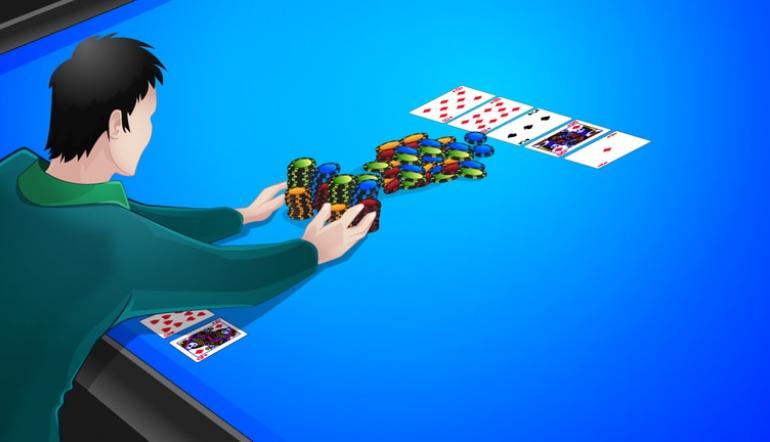Poker Gto
Play solved poker hands and get instant feedback on the precise EV (Expected Value) Loss of every action. The WPT GTO Trainer allows you to rapidly plug leaks and learn the Game Theory Optimal strategies that have dominated the highest stakes games in the world. GTO poker strategy is superior vs. Good regulars and unknowns, while exploitative play will help you to maximize your win rate when you know how to adopt it against weaker players. The best way is to use a mix of both – GTO poker strategy until you get some reads and then change your game to exploitative play and try to win as much as possible. Another benefit of a GTO-based approach to poker is that it forestalls potentially incorrect assumptions of other players. Of course, certain assumptions can be made if you’ve played against someone over a sufficient sample of hands, but making very general assumptions can be costly.
So how would you beat an opponent playing GTO Rock, Paper, Scissors? Well, you’d have to deviate from time to time. If you know your opponent is going to throw Rock 33% of the time and you see them throw Rock five times in a row, you can be fairly certain that Rock won’t show up very often in the next few throws. You now have a 50% chance they will throw Paper and a 50% chance they will throw Scissors. Your optimal strategy here would be to throw Scissors.
- Your Scissors vs Opponent’s Scissors = a tie.
- Your Scissors vs Opponent’s Paper = a win for you.
You could play your Scissors strategy until your opponent throws a Rock, then revert back to GTO strategy. Once you see a pattern again you can deviate from GTO to create a winning strategy.
You’re probably thinking, “Great, I’m a Rock, Paper, Scissors pro…what does this have to do with poker?”. Well GTO, in its very basic form, is just the art of perfect balance. Let’s explain in poker terms.

- Rock = Raise for value 33%
- Paper = Check 33%
- Scissors = Raise as bluff 33%
Let’s say on the river the above were your three options. Just as in Rock, Paper, Scissors, you’ll need to find the right balance. Of course, with poker it’s much more complicated, based on many different factors including your opponent.
Whilst the perfect balance may be to bluff the river 33% of the time, it wouldn’t make sense to bluff an opponent you know will call you 100% of the time. In this case you can only raise your value hands and check your weaker hands.
However, if this opponent notices that you only ever bet on the river with value hands, so starts folding, they are exploiting your play. You could then start to bluff the river, exploiting their play, until they figure out you are bluffing. After they figure out you only bluff the river, you could revert back to GTO of 33% bluff, 33% value, 33% check making us much tougher to play against. Again, we can deviate from GTO where doing so makes sense.
GTO is really not too important at lower stakes games, but is important for high stakes, nosebleed games and high rollers. For most of us, whilst it’s good knowledge to have, it’s probably not as important as balancing our value bets, bluffs and calls to exploit our opponents.

Level 1: The MacroAnalysis
The MacroAnalysis evaluates the overall strategy of Hero's range. The primary focus at this level is on range advantage, position and SPR, since typically these factors significantly influence how specific holdings within the range are played.
Range GridsThese grids show the possible hands which each player is likely to hold given prior actions. Hands which are more likely to be in a player's range are shaded darker. The GTOx dashboard juxtaposes both player's ranges since in GTO, strategies are wholly devised based upon how the ranges stack up against each other relative to the board.
Strategy SunburstThe strategy sunburst shows the frequencies of the possible actions at the current node for the entire range, as well as the actions available at prior decision points in the game. This visual depiction of actions can assist users in learning to assess how prior actions define each player's range, which is a critical skill in GTO.
Strategies and EV RegretThis table shows the average frequencies and resulting EV for each possible action for the range as a whole. Also shown is the Range EV Regret for each action, which measures the maximum amount of EV that will be lost if a player takes that action with 100% of the hands in the range and can aid in simplifying strategies. EV Regret is standardized by the pot size so each player can set his/her own EV Regret significance threshold based on his/her experience and skill level. Finally, this table shows 'Fold Leverage', which is equal to the percentage of the opponent's range that folds to each bet at the nash-equilibrium.

Poker Gto Books
Hand Strength TablePoker Gto

Poker Gto Trainer
This table shows the average EV, average equity and equity distribution for each player. EV measures the expected number of chips the player will win on average if it follows the optimal strategies. Equity measures the probability of the player winning or tying at showdown if no further betting occurs. The equity distribution aids in an understanding of overall composition of each player's range (e.g. polarized, capped, condensed, merged, etc.).